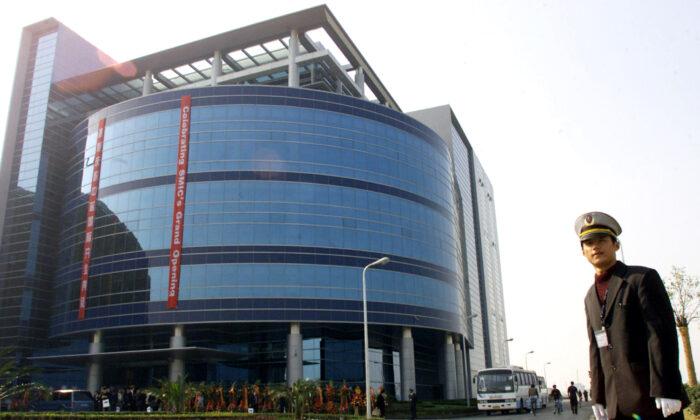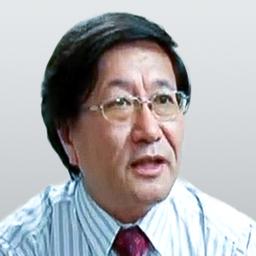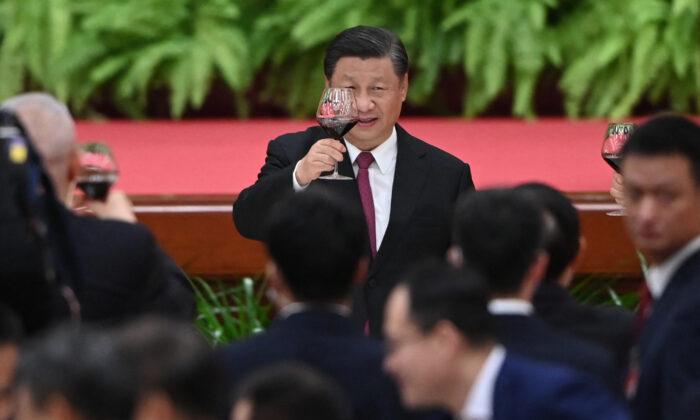Western media recently reported that China’s largest chipmaker, Semiconductor Manufacturing International Corporation (SMIC), may suffer trade sanctions from the United States. How severe is the situation? Let me put it this way: The U.S. sanction on SMIC will kill the Chinese Communist Party’s ambitious plan to develop the chip industry. Not only will the People’s Republic of China’s chip technology trail further and further behind the rest of the world, but it will soon find its critical military technology obsolete, putting it at a disadvantage in areas like space war and digital war with the United States.
In the age of the internet, a country’s electronics industry serves as the infrastructure of mass communication and a lifeline for the military. Semiconductor parts are at the core of all electronic products.
As early as in the 1960s, developed countries started to assemble electronic circuits on small flat pieces that are called integrated circuits (ICs). The ICs have since become much smaller and are often called chips. And their speeds have been greatly enhanced. Chips are now ubiquitously used in all sorts of electronic products, from airplanes, missiles, ships, and satellites, to civilian automobiles, computers, cell phones, and home appliances.
This is the doom of state-owned enterprises in China: government initiated projects and government funded companies that are hired to do research can’t catch up with international technology. The low tech and high cost prohibit Chinese chips from competing in the market, so China can only rely on imported commercial chips, and have to pay prices that reflect the patent cost of the imported products.
In 2001, former Chinese Vice Premier Li Lanqing made another effort to develop the country’s IC industry, and used financial and tax support to stimulate success. In 2002, the Chinese regime included mask aligner manufacturing in the 863 Major Technology Initiatives. The Science Department and the Shanghai municipal government merged multiple companies to form the Shanghai Micro Electronics Equipment (Group) Co., Ltd. to manufacture 100-nanometer steppers (step-and-repeat cameras). Again, there was no substantial development even after that the CCP changed strategy and purchased imported mask aligners to manufacture chips.
Fujian Jinhua Commits Espionage
Fujian Jinhua Integrated Circuit was one of the three large chipmakers in the CCP’s plan. When the company realized they had no hope to independently design mask aligners, it attempted to steal the technology through espionage, but failed. Among the related reports of The Epoch Times was my article “Systemic Failure and Strategic Defeat: The Microchip Front in the Sino–US Trade War,” published on Dec. 4, 2018, which detailed the case. The recent sentencing by a Taiwan court officially closed the door to Jinhua.DRAM (dynamic random access memory) is critical for commercial chips, so the CCP invested $100 billion in 2014 and founded three companies to develop the technology. Jinhua was charged with producing universal memory chips.
Jinhua first hired executives from Taiwan tech companies, then committed espionage against Idaho-based DRAM-maker Micron Technology by hiring a Micron executive and other employees, who brought over more than 900 confidential technology and patent documents.
When this happened, Jinhua just received some equipment purchased from the United States and was having the equipment installed and tested. As soon as the ban was announced, all the involved U.S. equipment, parts, and software providers stopped all technical support for Jinhua. Meanwhile, Taiwan’s Bureau of Foreign Trade issued a bulletin to domestic companies regarding business with Jinhua following the U.S. government ban. UMC then also stopped collaboration with Jinhua.
According to Taiwan’s news site UTN.com, on June 12, 2020, Taiwan Taichung District Court convicted the three Taiwanese engineers involved in the Micron case. They were found guilty of violating the Trade Secrets Act, sentenced to 4.6 to 6.5 years in prison, and fined. UMC was ordered to pay a fine of $3.45 million. The U.S. Department of Justice’s lawsuit against the three defendants is still going on.
SMIC Facing US Sanctions
SMIC was founded by Taiwanese national Richard Chang Ru Gin. He studied at a Taiwan university, then worked for Texas Instruments Inc. for 20 years. In April 2004, Chang started SMIC in Shanghai and served as the company’s CEO. He left the company in November 2009.In a conference in August 2020, Chang remarked that when he established the business, the Bush administration loosened some limitations on China, which allowed SMIC to import 0.18 and 0.13 micrometer technology, equipment and products from the United States.
Later, the Clinton administration further loosened the limit on the exportation of chip technology and equipment to China. As a result, SMIC was able to import 90-, 65-, 45-, and 32-nanometer chip manufacturing equipment which could function at 28-nanometer level. SMIC has since used these mask aligners to manufacture chips.
The CCP General Office of the State Council issued a notice titled “Policies to Further Encourage the Development of Software and the Integrated Circuit Industry.” In June 2014, the State Council issued the “Outline of the Acceleration of China’s Integrated Circuit Industry” and established the national IC funds, also known as the Grand Funds. The outline stated that the key components of the IC industry must reach the advanced global standards, and that some Chinese enterprises should be established as tier one players globally. The top priority of the outline was chip manufacturing, and 63 percent of the Grand Funds were planned to be invested into it. SMIC played a key part in the plan.
SMIC is now the biggest chipmaker in China, but only a couple years ago, it only had one-fifth of the market, while the Taiwan Semiconductor Manufacturing held about 50 percent of market share. Datang Telecom, one of SMIC’s biggest shareholders, also had a seat in SMIC’s board of directors. Datang, one of SMIC’s customers itself, provides optical fiber and microwave communication equipment for the Chinese military. This means SMIC also serves the Chinese military.
China’s chip industry development serves as a critical technological foundation for the growth of China’s military powers. The speedy upgrades of China’s chipmakers would mean upgrades of the CCP military’s weapon, space war, and digital war capabilities. As China’s top chipmaker, SMIC was attempting to produce 14-nanometer processors and memory, both high-end universal chips heavily leveraged by the military.
CCP Has Failed in Its Chip Dream
IC chips can be divided into two categories: universal chips and specialty chips. In the specialty chips area, China has very few companies that meet the global standards, and they’re primarily dedicated to commercial products such as those used in TV top boxes, surveillance systems, and Huawei’s routers.As for high-end universal chips, China lags significantly behind global capabilities, a major weakness of the CCP’s semiconductor industry. China relies heavily on other countries for high-end universal chips, and over 70 percent of China’s $200 billion chip imports are processor and memory chips. SMIC has not been able to make 14-nanometer chips, an important component of military capabilities upgrade. It won’t be able to use U.S. equipment and technology to create it in the future.
Though it is not clear how strict the U.S. sanctions will be, it is estimated that such sanctions may involve three aspects.
First, the United States may ban the sale of newer chip making equipment like mask aligners to SMIC, as insinuated in the Reuters report. If this becomes true, China will have no means of upgrading its chip manufacturing.
Second, American businesses may be required to stop providing technical services on SMIC’s current equipment. Since SMIC relies fully on the United States for equipment maintenance, such a ban will lead to major malfunctioning of SMIC’s equipment, which will significantly reduce, or even completely wipe out SMIC’s capacity to produce quality chips.
Third, U.S. companies and foreign businesses that utilize American equipment and services may be forbidden to sell mid/high end chips to China. In this scenario, China won’t be able to manufacture nor purchase chips, and therefore won’t be able to expand its military capabilities with upgraded chips. The potential sanction has greatly alarmed the Western financial sector. A global lender who has more than $200 million in outstanding credit with SMIC is evaluating the incremental risk of the loan.
Today, China’s chipmaking technology is at least two generations behind international standards. Globally 28-14-nanometer chip technology has been very mature, while some companies are already mass producing 14-10-nanometer chips. Intel, Samsung, and TSMC are all mass producing 10-nanometer chips, and are investing in 7-nanometer and 5-nanometer production lines. In China, in contrast, SMIC didn’t start mass production of 28-nanometer chips with its own equipment until 2015. If the United States approves the technology and service ban, SMIC may not be able to maintain its chip production, not to mention upgrades.
Chipmaking technology becomes obsolete very quickly. The number of transistors that can be fit on a chip doubles about every 18 to 24 months. Therefore, manufacturers need to upgrade their nanotechnology often. TSMC, for example, upgrades their entire production line once every few years, and even more often in recent years. Following the mass production of 10-nanometer chips in 2017, TSMC will realize mass production of 7-nanometer chips this year. While the global market leaders fly through upgrades, SMIC and other Chinese companies will stay still watching the gap widening over time. This means China’s technology and equipment obsolescence will soon be exposed in the military confrontations with the United States.
Huawei’s nightmare today may become the future of SMIC. Huawei’s chip supply was cut after the United States escalated its sanction on Aug. 17. As a result, Huawei’s smartphone production will decline by 80 percent from 240 million units in 2019, and its TV parts production will reduce by 30 to 40 percent.
The CCP has made many mistakes in its pursuit of “rising” and in its cold war against the United States. One of their biggest mistakes in the high-tech realm is that they imagined they could build military and technological advantages over the United States by using American equipment and services. Such an obviously unrealistic illusion drove them to challenge the United States. America’s countermeasures in hi-tech are an inevitable consequence of the military and economic conflicts between the two countries.





